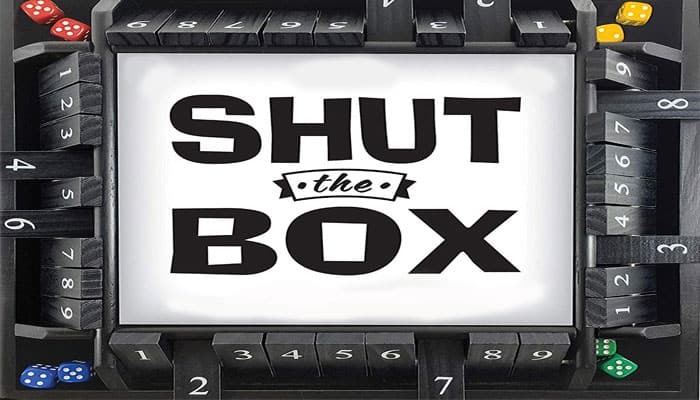

Components
- One game box
- 9 numbered tiles
- 2 dice
- Instructions
Object of the Game
To flip over all of the numbered tiles based on rolls of the dice, or to have the lowest score.
Setup
Open the box and flip all the tiles so the numbers are visible.

Game Play
Note: When rolling the dice, they must land inside the box and may not land at an angle. Otherwise, the dice must be re-rolled.

The first player rolls the dice onto the felt portion of the box, then flips over 1 or more numbered tiles that add up to the numbers rolled on the dice.
For example, the following tile combinations could be flipped for a roll of 6 and 3: 9; 1,2 and 6; 1,3 and 5; 1 and 8; 2, 3 and 4; 2 and 7; 3 and 6; 4 and 5.
Tiles that have been flipped over remain flipped over the entire game.
The player continues playing until tiles equaling the number rolled can no longer be flipped. At this point, the player's turn is finished. The numbers shown on the unflipped tiles are then added together to become the player's score.
For example, 1,2,3 would result in a score of 6 points (1 +2 + 3 = 6).
The tiles are flipped up again, and the next player's turn proceeds in the same manner.
If a player successfully flips over all the tiles, the box is declared "shut" and that player is immediately declared the winner. If no one shuts the box, the player with the lowest score wins.

End of the Game
The player who successfully flips over all the tiles or the player with the lowest score wins.
Challenging Variations
-
If no tile higher than the number 6 remains, players may choose to roll 1 or 2 dice.
-
Limit the number of tiles that can be flipped per roll to 2 tiles.
-
Play several rounds with a scoring limit of 100 points. The first player to reach 100 points loses the tournament.
-
The numbers of the unflipped tiles are read in sequence, from left to right, to become the player's score.
For example, 1 2 3 would be read as 123 points.
Continue Reading


